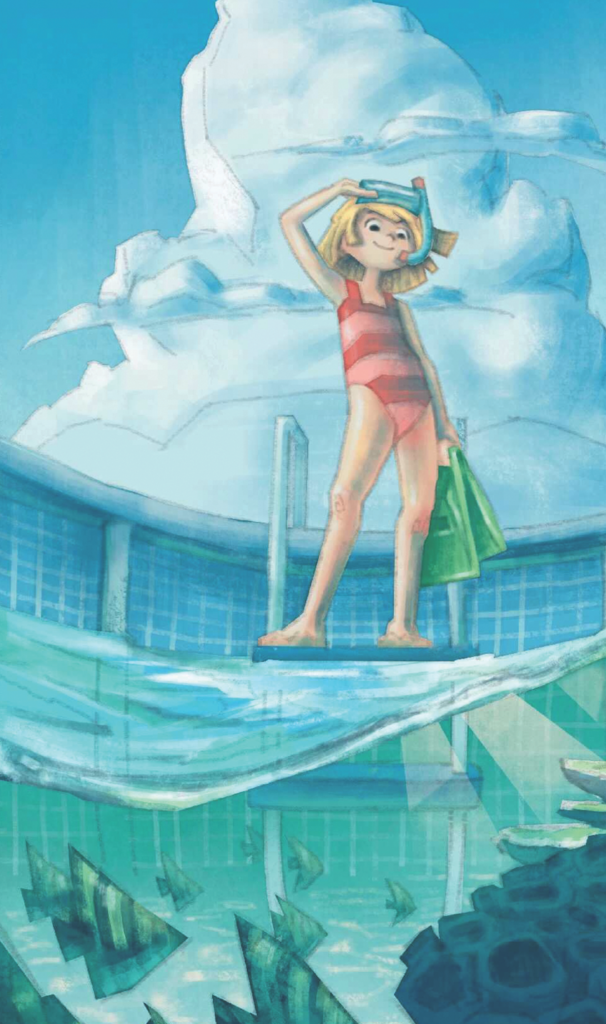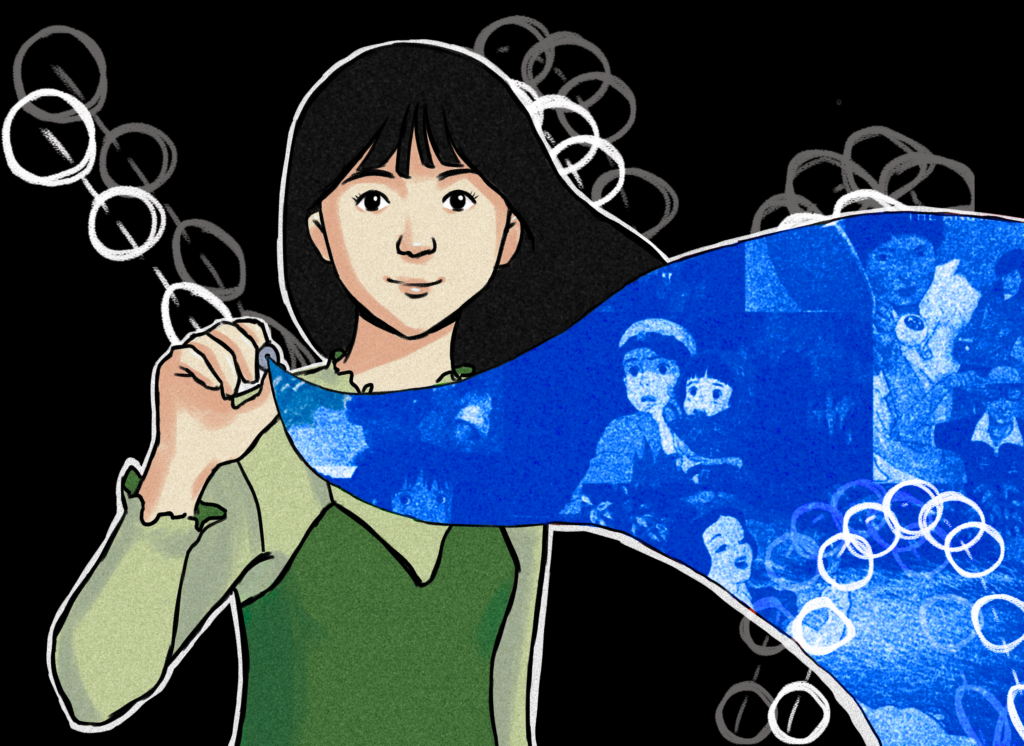Mickey Mouse, Bugs Bunny and SpongeBob — imagine inserting your own iconic character into the list of the most recognizable animations in the world.
No matter what initially draws students to the art form, the same principle rings true for all animation enthusiasts: The wonder of animation lies in its limitless creativity. “Introduction to Animation” is a distinctive course that exposes students to a powerful means of storytelling, challenging their own artistic abilities while allowing them to create projects that evoke deep emotion.
Taught by professor Elyse Kelly, the “Introduction to Animation” course at Georgetown University is transporting stories and faces to the world of animation through the department’s series of three animation courses, which allow students of all skill levels to delve into the medium.
More Than Just Disney Films
“Introduction to Animation” tackles simple questions, according to Kelly. The professor’s extensive background in animation, including her work with clients such as Netflix and Disney Research and her features at film festivals like Sundance, render her uniquely equipped to teach the class.

“The intro class is a little bit more of like, ‘What the heck is animation?’” Kelly said in a Zoom interview with The Hoya. “How do you make something move frame by frame? Why are you making me do this kind of thing? And then if they’re crazy enough to continue on with me, then we start to think about why you are making these choices.”
The focus at the introductory level is hand-drawn animation, making the course more beginner friendly, according to Kelly. The class opens with techniques like flip books and storyboarding, then gradually moves on to stop-motion animation and more advanced techniques like pixilation, which is stop-motion animation using live figures.
Not a complete novice in the field of animation, Ella Petreski (COL ’23) took the course during her sophomore year at Georgetown. She had taken animation courses before and was drawn to the class because it gave her the opportunity to be guided in her animation, rather than doing it on her own time.
“I did animation after school when I was in middle school. I would go to our arts center in town with a few friends twice a week for a year. Other than that, I kind of just on my own would try to animate stuff,” Petreski said in a phone interview with The Hoya.
Although Petreski is a physics major, in an ideal world, she would spend the rest of her life animating. For her, the animation course fulfills a childhood dream of attending art school.
“I just really love art in general. I draw all the time, when I can,” Petreski said. “When I was younger I thought about going to art school, and my dream job is actually to be an animator. I think that I saw that it was an option here and I was like, ‘Oh my gosh, this is perfect for me.’”
The course’s welcoming environment appealed to Malcolm Delfish (NHS ’23), who is taking the class this fall. In spite of only having made a few flip books in the past, he was ready to take the leap into drawing with “Introduction to Animation.”
“With my slightly decreased workload this semester, I decided to take the time to take an art class, Delfish said in an interview with The Hoya. “I have done stop motion animation on my own before, as a child, with Legos. I’ve made very terrible flip books in the past.”
Whether students take an animation course because they are passionate about the medium or just because they have an opening in their schedule, the class does not require any previous animation experience. Kelly recognizes that digital animation in particular can seem daunting to students with no prior experience.
Cultivating an environment that simplifies complex projects is possible by pushing students right into drawing and storyboarding, according to Kelly.
“I want people to be able to jump in and start making things move as soon as possible,” Kelly said. “It’s kind of really accessible in a way that strips back some of the more complicated parts of animation.”
The combination of group and individual projects throughout the course was one of the highlights for Petreski. One project in particular she highlighted was a picture animation assignment, in which students combined photography and drawing to create an animated series.
“We had to take pictures of different objects, and there were two different groups, and each group had to make their own, and we compared them,” Petreski said.
Different projects ask students to tap more deeply into their creativity, such as one assignment that Kelly has dubbed “visual music.” Students make music videos by picking a section of a song that resonates with them and animating the verses abstractly using various mediums such as paint, sand and paper.
Other assignments rely heavily on collaboration, imitating the structure of a film crew, according to Kelly.
“We have a director, a cinematographer and we have the actors. So it’s something where everyone has a role to play,” Kelly said.
Throughout the course’s many projects, from hand-drawn flip books to digital shorts, Kelly seeks to combat misconceptions about animation as an art form. The beliefs that animation is only embodied by Pixar and that it is meant for children minimize the appeal of the medium to the general public, according to Kelly.
“Here, we very rarely watch anything Disney Pixar mainstream,” Kelly said. “We watch a lot of independent, weird, experimental, kind of off-the-beaten-path animation because I want the class to understand what animation can be and what it is, so they can determine for the stories they want to tell what fits best.”
The Animator’s Impact
“Introduction to Animation,” although accessible to students of all skills, is about more than just the drawing board. Kelly loves to teach the course because she feels that animation tells emotionally rich stories that can tap into a wide range of emotions.
“It allows us to oftentimes tap into the core emotion or the core essence of something, and in a different, unexpected way,” Kelly said.

Kelly is not alone in her understanding of the social importance of animation. Ashley Malas, a professional animator and student at the Laguna College of Art and Design, fell in love with animation early on. Like the young animators taking “Introduction to Animation” at Georgetown, she feels that animation is great for everyone to learn, regardless of major or career aspirations.
“I knew I wanted to work with animation since I was 12 years old. I saw the bonus feature for films and thought, ‘I can’t believe people get to do this and get paid for it,” Malas said in a text interview with The Hoya. “Animation teaches you to understand people, and that is an invaluable skill wherever you go in life.”
Petreski finds that animation is powerful because of its inherent universality. The art form can provoke a range of emotions, both in childhood and adulthood.
“I think it is such a wide form of consumerism and entertainment. Growing up, everyone watches cartoons, and I think that even as you get older a bunch of people do as well. It really makes pictures come to life and is exciting and many times visually stunning,” Petreski said.
Beyond fictional cartoons and imagined personalities, animators also retell real-life experiences in a way that evokes strong emotion and empathy from an audience. Kelly said she once animated a project for the American Civil Liberties Union (ACLU) about a man who was incarcerated for over a decade and visited Times Square after being released.
The creative process involved capturing and expressing the emotionally charged atmosphere that surrounded just a few minutes of that person’s life, according to Kelly.
“Imagine what that would be like: going from a prison cell and then into that chaos and that light and that color, and just the insanity of Times Square,” Kelly said. “That kind of was what grounded the piece. We kind of built out the aesthetic from there so that particular moment could really resonate with the audience.”
Kelly knows that the project would not have been so successful had it not been for those who worked on the animation with her. A crucial part of telling people’s stories with compassion also comes from having a diverse team, and animation suffers from a lack of diversity, which Kelly seeks to address in her current work animating for documentary series and organizations like the ACLU and Sony.
“I try really hard to build diverse teams of women and people of color and making sure that I’m, you know, looking for the people that aren’t necessarily getting the opportunities or being noticed as much as often as I can,” Kelly said. “I hope we continue on this trajectory of more diversity, more interesting stories, more unexpected.”
With the “Introduction to Animation” course, more and more young people are able to engage with animation, hopefully diversifying the medium. The desire to tell more stories propels the class, a purpose that is beneficial for animators and animation fans alike, according to Petreski.
“It’s just good for your health to watch something that’s fun and has something you can’t get with live action.”














